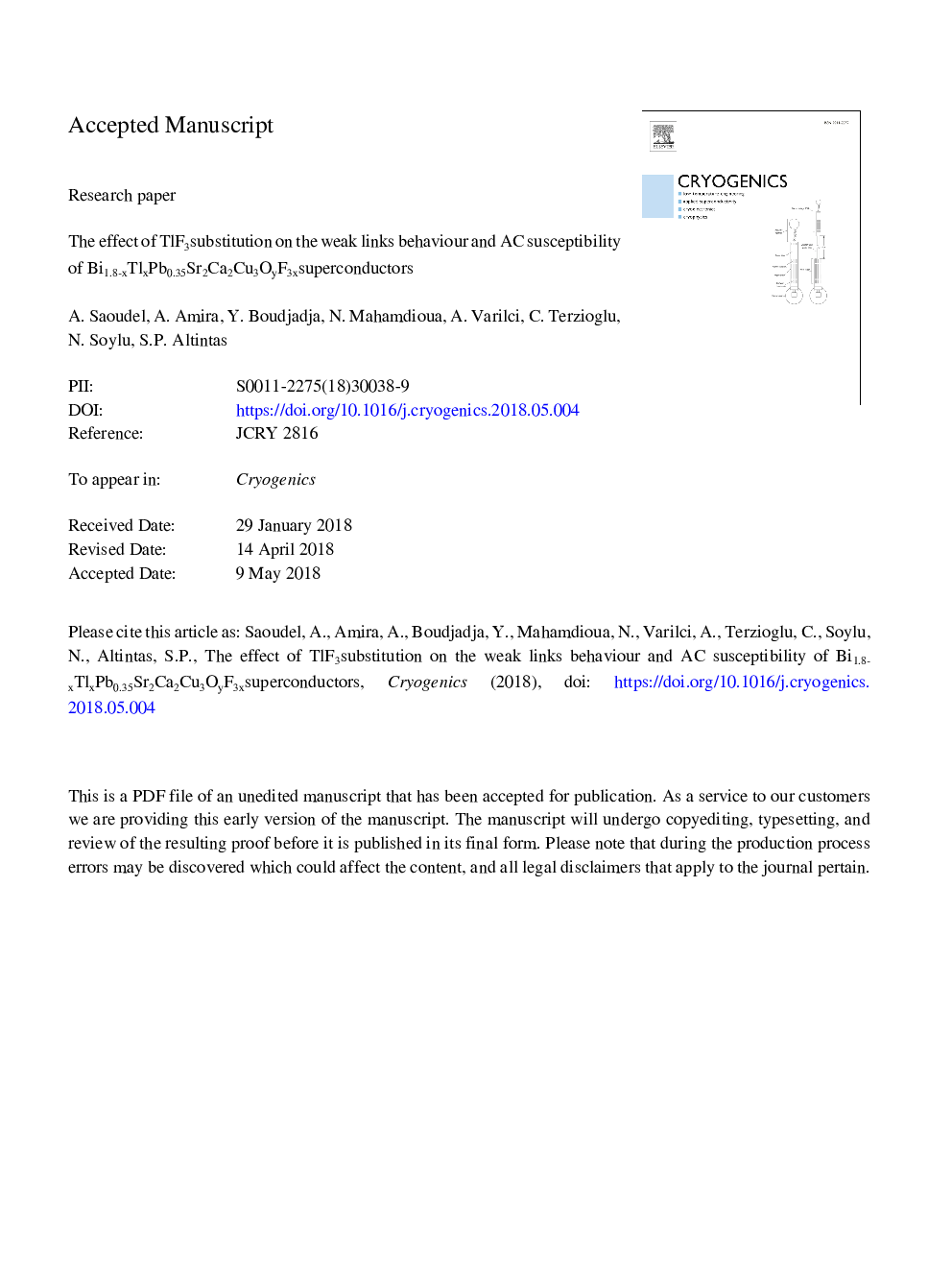| Article ID | Journal | Published Year | Pages | File Type |
|---|---|---|---|---|
| 7915492 | Cryogenics | 2018 | 25 Pages |
Abstract
We have studied the thallium fluoride (TlF3) doping and AC field dependence of the weak links behaviour and AC susceptibility of Bi1.8âxTlxPb0.35Sr2Ca2Cu3OyF3x superconductors with range of xâ¯=â¯0, 0.05, 0.10 and 0.15. The estimated value of the peak temperature (Tp) from the derivative of the resistivity curve (dÏ/dT) is increased with TlF3 doping at 0 and 0.5 teslaand attest on both intragranular and weak links transition, while the full width at half maximum (FWHM) value is decreased. The susceptibility measurements Ïâ²(Ïâ³) show that as the magnetic field increases the intra and intergranular AC loss peaks shift to lower temperature with broadening. It was found that the onset temperature of diamagnetism Tc is increased with TlF3 doping. However, the intergranular peak temperature Tpj decreased with increasing magnetic field and TlF3 amount. This behaviour was explained by the poor connectivity between the grains caused by the presence of weak links or secondary phases. The calculated volume fraction of the grains (fg) was found to improve with increasing TlF3 doping and AC magnetic field. Furthermore, the estimated values of the maximum of the extracted matrix susceptibility (Ïm,maxâ³) by using a critical state model proved that the intergranular losses are minimized with TlF3 doping. On the other hand, the obtained results shown that the coupling between the grains is rather weak than the coupling within the grains and attested of the improvement of superconducting parameters in the doped samples.
Related Topics
Physical Sciences and Engineering
Materials Science
Electronic, Optical and Magnetic Materials
Authors
A. Saoudel, A. Amira, Y. Boudjadja, N. Mahamdioua, A. Varilci, C. Terzioglu, N. Soylu, S.P. Altintas,
